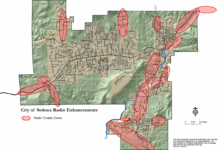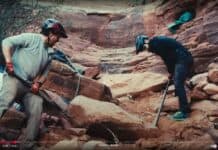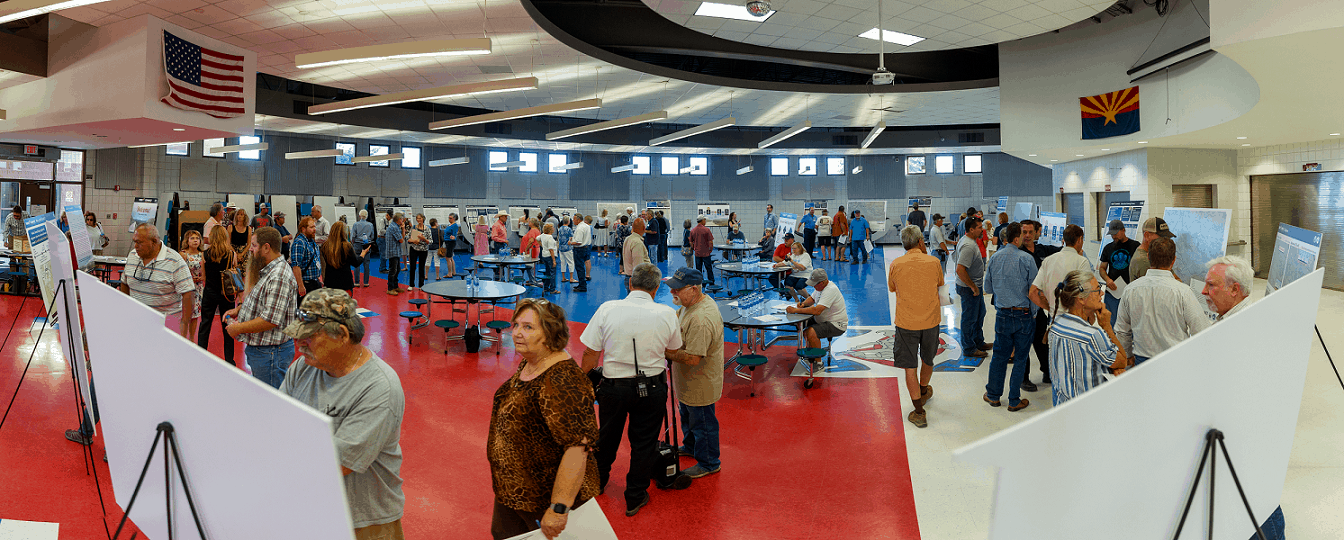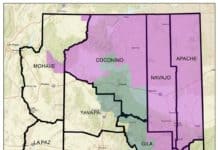Yavapai County and Jacobs Engineering unveiled several potential routes on June 4 for a new road connecting State Route 260 with Cornville Road via a new bridge over the Verde River, as stipulated in a $25 million BUILD grant from the U.S. Department of Transportation that the county was awarded in December.
Reaction to the proposed routes was mixed with officials from Cottonwood and the U.S. Forest Service, as well as public safety employees, expressing hope for the potential benefits of the new road, while Camp Verde leaders, responding to heated opposition from residents of the Middle Verde neighborhood at the north end of town, taking a much more skeptical approach.
At a meeting on June 19, the Camp Verde Town Council unanimously voted in opposition to the new road. On June 25, Verde Connect released results of a traffic model comparing the expected congestion of Cornville Road, State Route 260 and the surrounding roadways in 2025 and 2045.
The study analyzed the traffic differences if the road was not built or if the road was built, with three different potential alternatives. Though the results did suggest that the new roadway would alleviate some traffic on Cornville Road, it found only a small drop in congestion. The traffic study predicted significantly increased traffic through the area by 2045 no matter which alternative is selected, with an estimated 57,000 daily motorists on State Route 89A through Southern Cottonwood, 14,000 to 19,000 drivers on different sections of Cornville Road and 39,000 drivers expected daily on State Route 260 south of Cottonwood. However, it found that none of the potential routes would substantially change this state of affairs.
Alternative A2, connecting to State Route 260 at Thousand Trails Road, would be expected to decrease traffic on Cornville Road to a daily traffic volume of 13,000 to 18,000 for the two different sections of the road, with traffic on State Route 260 south of Cottonwood rising to 41,000 motorists and 5,000 to 7,000 daily drivers on the new road.
Alternative B2, leaving from Coury Road, is projected to have the same effect on Cornville Road and State Route 260, but with an even higher number of drivers — up to 8,000 — on the newer connector. Alternative C2, which meets with 260 at Old Route 279, is projected to have the same effect on Cornville Road as the other two, and a similar traffic flow on the new route.
None of the potential routes are projected to reduce the daily traffic flow for Cornville Road by more than a 1,000 cars. While all are projected to lower congestion on State Route 89A from 57,000 cars per day to 55,000, a decrease that would still leave the major highway classified as “high congestion.”
For Zach Wolfe, who has organized a group of his neighbors in the Middle Verde Road neighborhood called Verde Disconnect to oppose the new road arguing that it would ruin the rural character of the area, the traffic study is another argument against building the road.
“Everything in the high congestion area is the same,” Wolfe said. “You just get thousands more cars on Middle Verde Road.”
Yavapai County District 3 Supervisor Randy Garrison, who has been an active proponent of the new route, said he was surprised by the results of the study, but remains undeterred in his support for Verde Connect. “It wasn’t as markedly different as I expected it to be, but one of the things that’s not in there is there’s a lot of other things that are going to be done in the area,” Garrison said. He pointed to other road projects in the area that could potentially build on the effects of Verde Connect, such as development of Ogden Ranch Road. “The benefits are going to be accentuated.”
Garrison argues that the coming traffic problems make it integral for the county to do what it can to alleviate future congestion now, in order to allow for a more manageable system.
“Everything takes time, everything takes effort and it takes commitment,” Garrison said. “We’re moving forward with it. It’s not going to be the silver bullet that fixes the entire regional road system. It’s just another part of creating a better flow region wide.”
Jon Hecht can be reached at 634-8551 or email jhecht@larsonnewspapers.com






















